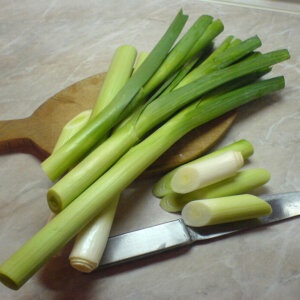Native to temperate regions of the Northern Hemisphere, the yarrow plant is a hardy herbaceous perennial that’s a member of the Asteraceae plant family. Also known as old man’s pepper, common yarrow, nosebleed plant, or soldier’s woundwort, the erect, flowering plant is considered by many to be an invasive weed.
Many homesteaders, though, appreciate the flower for its medicinal properties and flowering display.
In Arizona, New Mexico, Colorado, and California the herb is called plumajillo (little feather) for its elongated shaped delicate, fern-like leaves. An attractive flowering plant with broad, flat creamy white flowerheads complemented by rich dark green foliage, the yarrow plant flourishes in many parts of the world.
Growing The Yarrow Plant
Disease and drought resistant, easy to propagate and easy to grow, yarrow is a good choice for both urban and rural landscaping. Blooming in late spring through late autumn, yarrow adds visual interest and color to every landscape.
Requiring just an inch of water per week, the yarrow plant will grow most anywhere in well-drained soil. Avoid planting in areas where water tends to pool. Yarrow cannot tolerate “wet feet.”
Related Post: 6 Plants That Like Wet Soil
While yarrow prefers a full-sun location, the plant is tolerant of less than ideal conditions and will do well in a shaded spot. It is virtually care-free.
Planting Yarrow Seeds and Starts
Yarrow plant seeds and starts are available for purchase online or from local home and garden centers. To plant yarrow in your garden, loosen the soil to a depth of 12 to 18 inches after removing roots, rocks, and weeds. Add a couple of inches of well-aged herbivore manure (cow, horse, goat, llama, sheep) to the soil and mix in well.

When planting along a fence line or walkway, plant yarrow about 18 inches apart. The hardy plant has no trouble getting established and will spread easily. Although yarrow tends to spread, it is not aggressive. Divide yarrow every three years or as needed to maintain plant vitality.
Yarrow Varieties
A favorite variety of the yarrow plant includes cerise queen. This variety has deep pink flowers and dense, dark green foliage. It’s a traditional gardening favorite.
While common woodland yarrow is a creamy white color, hybrid varieties are available in a broad spectrum of colors including pink, purple, red, and yellow. That being said, the native, creamy white tops are the flower preferred by naturopathic health practitioners.
Maintaining Yarrow Plants
Prune yarrow regularly for the first few seasons. Deadheading promotes flowering and will keep the plant in near-continual bloom. Cut back in late spring before the plant begins to flower. Pruning in the spring will keep the plants dense and shapely and will reduce the height of the plant to avoid a “leggy” look.
Foraging for Wild Yarrow
Yarrow, mountain mint, dandelion, willow, plantain, chickweed, calendula, and chamomile all offer stellar medicinal benefits. These common woodland plants are but a few of the wealth of medicinal plants found in Mother Nature’s medicine chest.
Related Post: Foraging For Wild Berries
However, yarrow stands head and shoulders above the rest. Medical research studies conducted on yarrow confirm the plant’s impressive antioxidant, antiviral, antibacterial, and anti-inflammatory properties.

In the United States, wild yarrow is most plentiful in areas with mountainous terrain. The entire yarrow plant proves useful. Gather stems, leaves, and flowers in late summer when the plant is in full bloom.
When wild harvested, plants such as yarrow are used as the primary herb or infused together with garden herbs and essential oils in a creamy herbal ointment. This ointment helps bring healing relief to dry, rough skin and chapped lips, muscle pains, cuts, insect bites, and allergy irritations. Talk to your local county extension agent for assistance in identifying wild medicinal plants native to your local area.
Yarrow as a Wild Edible
Yarrow is one of Mother Nature’s most sought-after wild edibles. Tender young leaves serve as a leaf vegetable: raw, chopped in a salad, steamed like spinach, or added to stews and soups.
During the Middle Ages, yarrow leaves with their savory-sweet, slightly bitter taste, functioned as a flavoring in beer until most brewers switched to hops. In Sweden, yarrow (known as field hops) is still a favored ingredient in the manufacture of beer. Fans of yarrow-enhanced beer remark that they find it to be significantly more intoxicating than beer brewed with hops.
Yarrow tea is made with 1 ounce of dried herb to 1 pint of boiling water and consumed warm. The tasty tea may be sweetened with honey or sugar. Yarrow tea opens pores, detoxifies the system, and purifies the blood.
Medicinal Benefits of The Yarrow Plant
In traditional folk medicine, yarrow (Achillea millefolium) is prized for its astringent properties that staunch the flow of blood from wounds. The use of yarrow as a blood loss remedy seems to have originated centuries ago from European folk medicine which later spread to the east.

The botanical name Achillea is credited to the noble warrior Achilles, who is said to have applied yarrow to the hemorrhaging wounds of his soldiers. For centuries, warriors worldwide have carried yarrow into battle. The yarrow plant was treasured for its healing power and confident spirit, providing protection, strength, and courage to those who wore it.
Related Post: How To Make A Healing Salve From Backyard “Weeds”
The prolific flowering tops are the most medically active part of the plant. A chemical analysis of yarrow indicates the presence of tannins, flavonoids, alkamides, inulin, and ascorbic acid. The essential oil distilled from the yarrow plant possesses antimicrobial and antioxidant properties.
Yarrow for Sore Muscles and Joints
Herbalists prepare an effective massage oil from the following ingredients:
- 15 drops yarrow essential oil
- 15 drops St. John’s wort essential oil
- 10 drops hyssop essential oil
- 10 drops clary sage essential oil
- 10 drops lemongrass essential oil
- 10 drops eucalyptus essential oil
- 10 drops peppermint essential oil
- 20 to 30 drops of almond oil
The combination proves beneficial for inflamed joints and injured muscles. Infusions of yarrow leaf taken either internally as a tea or applied externally as a poultice, accelerate recovery from severe bruising. A compress steeped in an infusion of yarrow helps relieve swollen legs and soothe varicose veins.
Yarrow for Respiratory Issues
If you suffer from asthma, allergies, or other respiratory woes, try covering your head with a towel and breathe in the healing steam from yarrow leaves steeped in boiling water. A warm compress of steamed yarrow leaves applied to the chest, proves useful in the treatment of colds and pneumonia.
Blue Yarrow Essential Oil
Obtained by steam distillation, yarrow essential oil contains the “essence” of the plant and captures all the plant’s beneficial properties. Yarrow essential oil, rich in anti-inflammatory properties, relieves congestion when inhaled in a steam diffuser.
Aromatherapists combine yarrow essential oil with cedarwood, clary sage, oakmoss, and ylang-ylang essential oils to create a synergistic oil blend that when diffused, brings a delightful fragrance and a calm, peaceful, healing energy to any environment.
Native Americans blended the pungent oil with bear grease to craft a healing balm for sprains, bruises, and arthritic conditions. The blue essential oil also repels mosquitoes, ticks, and flies. Chewing tender, young yarrow leaves relieves toothache pain.
Concerns and Cautions
- Persons with sensitive skin may in rare cases, experience skin irritation or a rash when handling yarrow.
- Avoid ingesting yarrow when pregnant.
- Common yarrow is toxic to cats, dogs, and horses. Consumption may cause hypersalivation, vomiting, and diarrhea.
References:
- Evaluating the Efficacy of Achillea millefolium and Thymus vulgaris Extracts Against Newcastle Disease Virus in Ovo, The National Library of Medicine
- Native Plants, Lady Bird Johnson Garden Center










































Hi Marlene! Nice blog. I like flowers in my garden. Yarrow is one of them. Thanks for sharing useful tips. I learned something new from your post like Medicinal Benefits of Yarrow. Keep Posting!